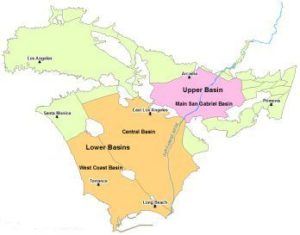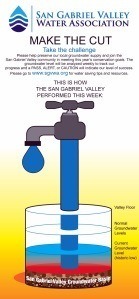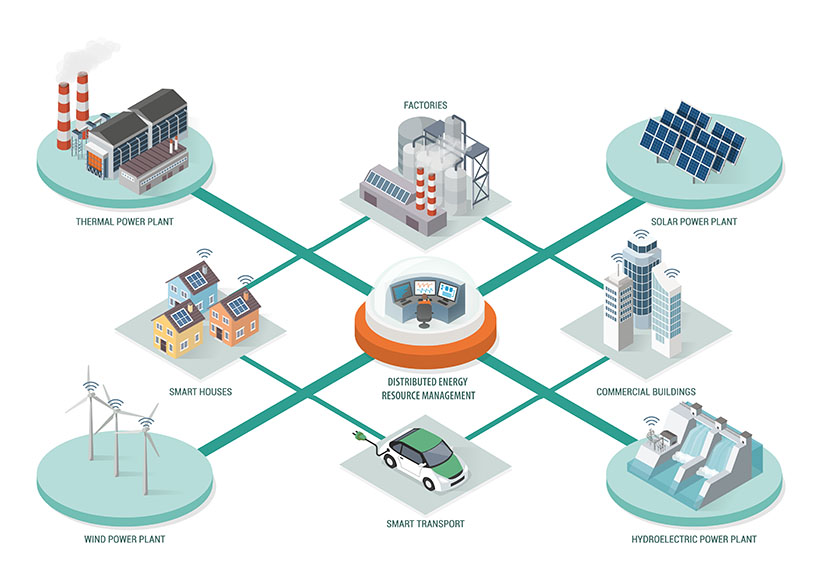
The hard work of sustainable groundwater management
By Dr. Erik Porse, CCSC Postdoctoral researcher
This article was originally published on the California Water Blog
Under California’s new groundwater law, local agencies must adopt long-term plans for sustainably managing basins subject to critical overdraft. Preparing these plans will be challenging, requiring collaboration and compromise among water users accustomed to pumping as they please.
Local agencies do not know exactly what they’re in for. They’ve never been responsible for achieving “sustainable groundwater management,” as the law requires. However, the histories of adjudicated basins in the Los Angeles area can be instructive. They illustrate the difficult and exhaustive process required in reaching agreement among unregulated groundwater pumpers.
Beginning in the late 1940s, as the post-war suburban boom was taking off, several water utilities and landowners in Southern California turned to the courts to settle disputes over groundwater pumping rights.
Two factors helped the parties reach long-term agreements approved by the courts and codified into law.
First, imported water from the expanding Metropolitan Water District of Southern California (MWD) allowed water users to set less restrictive limitations on groundwater pumping, because additional water was available to the basins.
Second, water users had to learn to communicate and negotiate before deciding how to allocate pumping rights. They did this first through informal working groups, and then through formalized institutions and regulations. The groups had to make a long series of decisions in financing engineering assessments of safe yield, negotiating with MWD for imported water and dealing with neighboring basins affected by their pumping.
The Long Beach Judgment
The making of a 1965 groundwater agreement known as the Long Beach Judgment is particularly illustrative. The settlement governs groundwater flows between the “Upper Basin” (Main San Gabriel Basin) and the “Lower Basins” (the Central and West Coast groundwater basins) of Los Angeles County. Carl Fossette, a lead player in the negotiations, recounted the talks in a short 1986 book, “The Story of Water Development in Los Angeles County.”

Rapid urbanization and prolonged drought in the 1940s put these basins into severe overdraft, where groundwater use greatly exceeded the amount that could be replaced.
Water users in the Lower Basins had spent millions of dollars supplementing and recharging their groundwater supply with imported Colorado River water from MWD. Those in the Upper Basin, however, had no plans to curtail pumping or buy imported water, and had done little to replenish groundwater.
The disparity grated on water users in the Lower Basins because most of their natural groundwater replenishment comes from the Upper Basin, via underground flows through Whittier Narrows. The two sides had to come to terms with the groundwater overdraft to sustain the region’s rapid growth.
Water users organized informally
The Central Basin Water Association took the first step by inviting major Upper Basin users to meet with Lower Basins users in January 1955. The upstream users, in turn, formed the Upper San Gabriel Valley Water Association, headed by Robert Radford, the mayor of Monrovia and a local water expert. Fossette describes their first office as a dingy house “nestled up to a gas station, heavily populated with crawling things which defied eviction.”
Most upstream association members pushed to form a municipal water district and annex to MWD. However, the cities of Alhambra, Azusa, Monterey Park and Sierra Madre broke away to form their own group and avoid contracting with MWD.
Frustration grew in the Lower Basins. In 1958, the Long Beach Water Department sued Upper Basin users for allegedly causing their water tables to drop and sought a determination of upstream users’ water rights.
Lawyers, consultants kept at bay
Early talks among lawyers and engineers were unsuccessful. Then, in 1960, each side formed five-member “lay” negotiating committees, excluding technical and legal staffs in favor of representatives from cities and water associations.
Many of the lay committee members knew each other from other dealings. Professional staff and consultants remained on the sidelines. The technical experts did jointly develop what became the “basic reference book” throughout negotiations, but only occasionally attended talks on a “speak-when-spoken-to” basis.
Negotiators met monthly through early 1961 to produce a breakthrough deal guaranteeing underground flows from the upper to lower basins. The talks then moved to details. Key figures helped secure trust and bridge gaps.
Trusted officials narrowed disputes
Fossette was particularly well positioned for this role, being general manager of water districts in both the upper and lower basins. He was eventually invited to participate in the negotiations.
On Sept. 11, 1963, Fossette instigated a marathon effort to work out an agreement. Negotiators met at the new Edgewater Inn in Long Beach with the intention to “stay there until we reach agreement” (Fossette 1986: 191).
The chairman of the Lower Basins committee walked out on the first day. But negotiations soon resumed:
“After early breakfasts, talks extended until lunch, followed by sessions until dinner hour. Even at the dinner hour, the participants were busy discussing strategy. This schedule of negotiating and wrestling with problems continued for several days. After each session, it was necessary for Fossette and (Ruth) Getches to redraft and retype the documents which had been amended, or simply reworded, and agreed upon” (Fossette 1986: 191-92).
After four exhausting days, the parties checked out of the hotel with a solid pact, later validated by Los Angeles County Superior Court. It was a critical step in securing a region-wide strategy for long-term groundwater management in the county.
Negotiating groundwater agreements today

As pumpers in basins throughout California develop sustainability plans, they may ponder important considerations for groundwater management today that the Los Angeles area settlements did not address.
For instance, those agreements do not consider water for fish and other environmental uses, even though surface waters and groundwater are closely linked. The adjudications also are silent on water quality. Underground contaminant plumes today affect how the court-appointed watermasters manage groundwater in adjudicated basins.
Southern California groundwater agreements are regarded as models of environmental governance. They formed the basis of a 1965 dissertation by the eminent social scientist Elinor Ostrom, which described how small- and medium-sized groups are able to develop collective agreements that can preserve natural resources. That work led to decades of international research on environmental governance that won her the Nobel Prize for Economics in 2009.
Yet, past results do not guarantee future victories. Local water interests have much hard work to do with late nights and cold pizza before California can declare success in managing its groundwater responsibly.
Erik Porse is a postdoctoral researcher with the Institute of the Environment and Sustainability at UCLA.
Further reading
Blomquist W. A. (1992). Dividing the Waters: Governing Groundwater in Southern California. ICS Press
Fossette C. and Fossette R. (1986). The Story of Water Development in Los Angeles County. Central Basin Municipal Water District. Los Angeles, CA.
Hardin G. (1968). The Tragedy of the Commons. Science 162.3859 (1968): 1243-1248
Lund et al. (2015). Creating effective groundwater sustainability plans. California WaterBlog. March 4, 2015
Ostrom E. (1965). Public Entrepreneurship: A Case Study in Ground Water Basin Management. PhD dissertation. UCLA
Ostrom E. (1990). Governing the Commons: The Evolution of Institutions for Collective Action. Cambridge University Press
Porse E., Glickfeld M., Mertan, K., Pincetl, S. (2015). Pumping for the masses: evolution of groundwater management in metropolitan Los Angeles. GeoJournal. doi: 0.1007/s10708-015-9664-0
California’s Sustainable Groundwater Management Act
The Long Beach Judgment. Board of Water Commissioners of the City of Long Beach, et al, v. San Gabriel Valley Water Company et al, Los Angeles County Case No. 722647. Judgment entered Sept. 24, 1965



